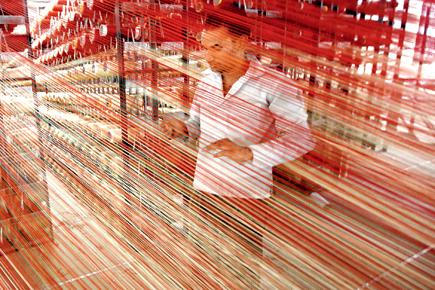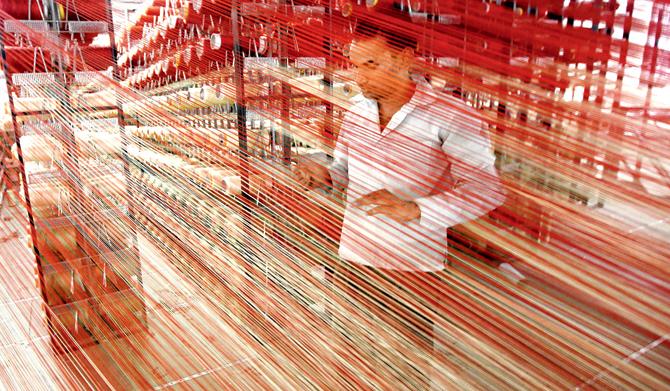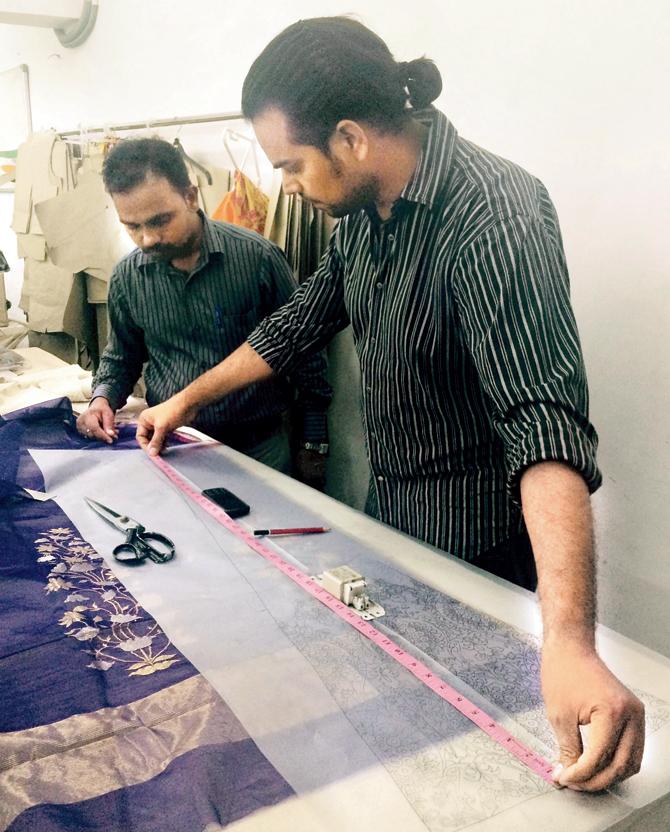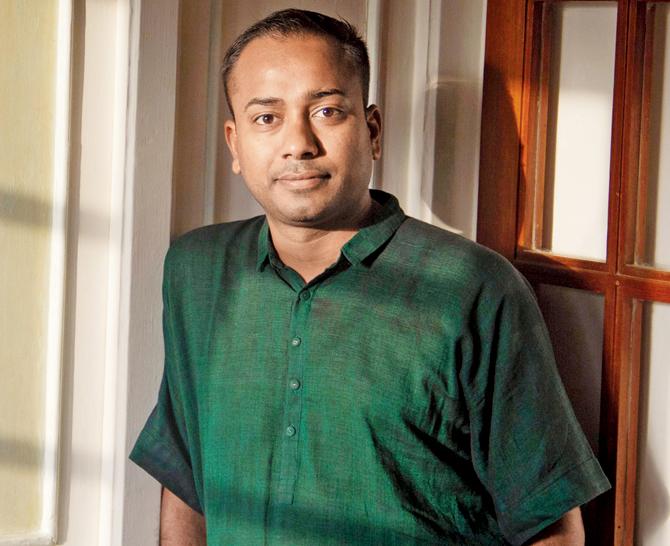On the occasion of the first National Handloom Day, fashion designers Rahul Mishra, Gaurang Shah, Shruti Sancheti and Sanjay Garg, who extensively work with handwoven Indian weaves, share their favourites with Dhara Vora

Handloom
Shruti Sancheti
I always believe and state that India has an unsurpassed legacy of weaves and textiles and as a designer, even if I work with a new weave or craft in each of my collection, I would never be devoid of ideas and inspiration. In fact, since the west is looking towards India, and international designers are using Indian weaves in their collections, it’s time Indian designers, instead of aping the west blindly, encash on their unique heritage and splendour of textiles.

Pic/AFP
ADVERTISEMENT
It is hard to point out which weave I love the most because I love Kanjeevarams, Upada, Pochampalli, Venkatgiri and Mangalgiri from South India; Sambalpuri, Ikat, Jamdani, Tangail, Gamcha, Ryndia from East and North East; Banarasi and Tanchoi from the North; and Paithani, Gharchola from the West. Having worked with clusters from Andhra Pradesh, Varanasi, West Bengal and of course, being deeply associated with Maharashtra State Handloom Corporation, I am extremely fond of rare weaves of Vidharbha, where I hail from.

Intricate, restrained weaves like Ruiphool, Narli, Rasta, Totapuri, Nagpuri checks and even the Khand fabric are personal favourites and have tremendous potential to be global fabrics because of their minimalist yet beautiful appearance. These weaves are untapped and with the right colour combination, thread counts and yarns, they have plenty of potential. All of them have stories and historic relevance, which is extremely intriguing and though I am very happy to work on Shaina NC’s project Reinvent Banaras, I hope similar endeavours are undertaken for the other weaves too. Make In India and brand India should become a force to reckon with, considering we are one of the few countries left in the world with a weaving tradition and skill set.
Rahul Mishra
I have worked with a variety of weaves such as Banarasi, Maheshwari, Chanderi, Dhakai Muslin from West Bengal, Kota Doria, and Ikat from Odisha and Andhra Pradesh. However, the Kerala handloom, Kasavu, will remain a favourite as I created my first collection with it. I started my career with Kerala handlooms for the collection I did for the Gen Next show at Lakme Fashion Week in 2006. I was a student at National Institute of Design at that time.

I like it because it is very natural, there is no extra colour and there is gold for prosperity. It is simplicity next to god. Next, I like Banarasi, which is the opposite of Kasavu — it is elaborate, brighter and larger than life. I also love Chanderi, which is midway between Kasavu and Banarasi. It takes elements from both, it can be extravagant, and the motifs are such that it is effortless too, and it has that transparency of the Kasavu weave.
I also like how these three are played on the map — Kasavu is from south, Banarasi from north, and Chanderi in the centre. In weaving, Kasavu is cotton on cotton, Banarasi is silk on silk with zari and Chanderi is silk and cotton. I love the fact that the government wants to draw attention to such beautiful weaves with a day dedicated to handlooms and empower the villages they are made in.
Gaurang Shah
Since, the beginning of my journey as a textile designer, I loved the Jamdani weaving art and it remains so even today. It always fascinated me for its many distinct features. The foremost of all is that it gives me boundless creative freedom. It is a versatile technique with an incredible flexibility to make number of variations while weaving.

It also gifts you the liberty to apply different textures and colours even in most challenging intricate designs. For a textile revivalist like me, it is very vital to translate my dream designs into reality, to keep consumers love for handlooms alive, and Jamdani is the one and only technique that undoubtedly meets my creative and consumer expectations perfectly.
The ageless weaving art has enabled me to consistently introduce many innovations in my traditional textile fashion presentations in collaboration with my 500+ weavers spread across the country.
Sanjay Garg
For me, everyday is handloom day. I empower myself by working with handlooms. Every year, I pick one Indian weave and work on it.

So, it is difficult for me to pick one as I have worked with Chanderi, Mushroo and many more. Though currently, the Mushroo weave is on my mind. It has a warp face-setting weave. Hence, it has silk on one side and cotton on the other; it is a double-sided weave.
 Subscribe today by clicking the link and stay updated with the latest news!" Click here!
Subscribe today by clicking the link and stay updated with the latest news!" Click here!







